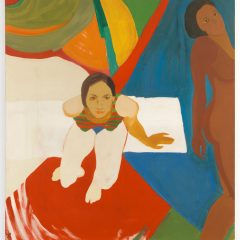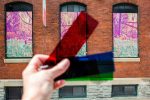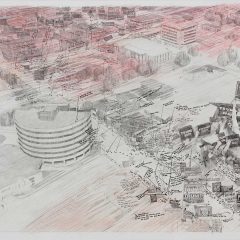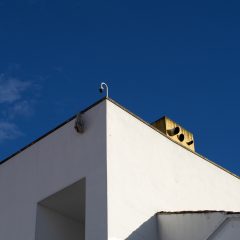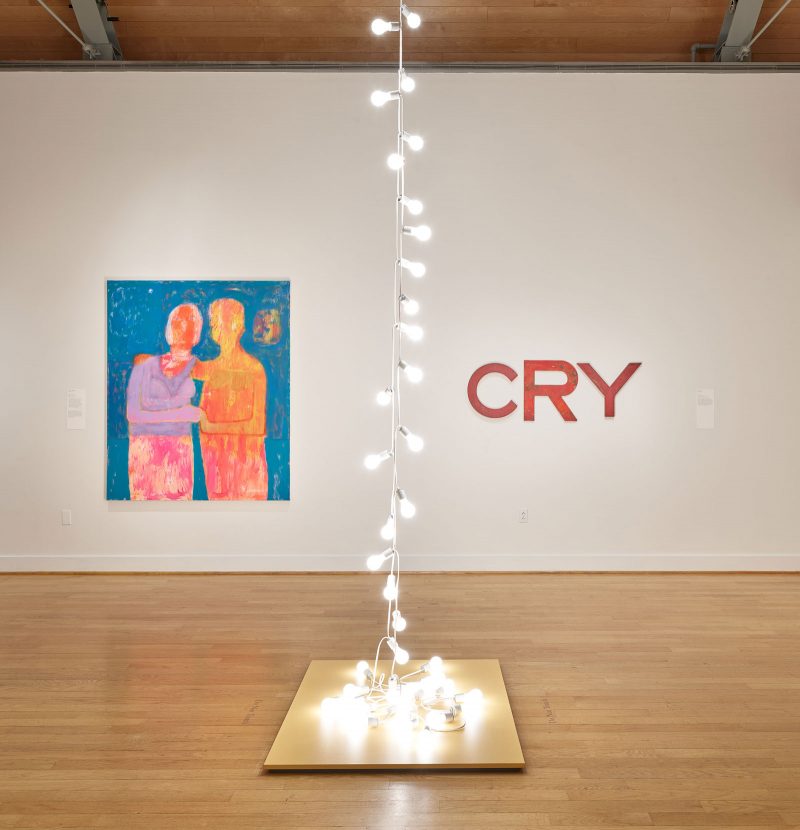
The general aura of both touch-starvation and touch-aversion that has enveloped me over the past eighteen months also influences my response to RISD’s Any distance between us, on display until March 13, 2022. The exhibition features beautifully-rendered images of lovers embracing, reclining, and being physically tender with one another, yet a small part of my mind reacts oddly to this kind of corporeality.
Gary Chapman’s concept of love languages has also been on my mind over the past year or so—whether one responds most to physical touch, acts of service, quality time, gift-giving, or words of affirmation. What do you want most from those you love in order to be secure in that love? In Any distance between us, all five love languages are present, in romantic, platonic, and familial contexts. The most affecting works in this show are the ones where physical touch is not explicitly depicted, but rather implied or alluded to in the course of more unexpected depictions of intimacy that go beyond the physical. Indeed, they’re the works in which bodies are not necessarily portrayed at all.
“Art & Family” by Christopher K. Ho, one of the show’s standout pieces, best conveys the messy inflections and overlaps among all different love languages that comprise a long-term relationship. The work is structured around a wooden armature that resembles a music stand with two shelves, with a fictional “Art & Baby” composition booklet on one shelf and a list of acts of service both large and small on the other. As the artist writes in his statement, he and his partner were debating over whether to have a baby, engaged in what he calls an “inane duet” of meting out acts of service as affectionate currency, reflected in the physical form of Art & Therapy: “Placed book on bedside table with dog-eared passages / Added brass ashtray from Indonesia to your collection / Topped soap dispenser.” We don’t need the text to say “the way you like it” after each small statement, because it’s already assured; Ho wouldn’t have made the list if it weren’t a list detailing how particularly well and intimately he knows his partner and what his partner likes and needs, both in terms of everyday tasks and grand gestures.
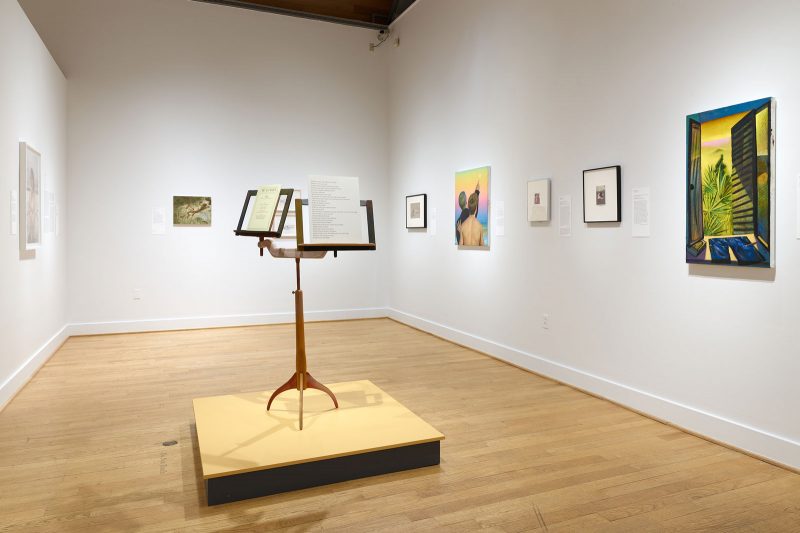
Similarly, Jack Pierson’s “Cry” (2009) elicits a stirring sense of emotional intimacy, all without depicting a physical body. Instead, the word “cry” is rendered in all capital letters in metal and wood and mounted on the wall. While the typography is, as the label notes, inspired by the visual language of advertising—and seems like the text of an Ed Ruscha painting has jumped right out of the frame—the effect was deeply moving despite the simplicity of form. Once again, the timeliness of Any distance between us activates the works on display in new and disconcerting ways. Who hasn’t felt like crying over the past two-ish years of lockdowns and mass death, of pandemic-weighted social fragmentation? And yet despite a general air of malaise and caution, it’s still not considered socially acceptable to cry in public. Crying in public is perhaps too intimate, or at least it creates an illusion of intimacy. When someone cries in public, we can’t help but feel for them—to recognize the echo of their tears on our own cheeks—but we also can’t bear to look at them because they’ve taken the private and intimate into the public. In this context, “Cry” comes across as a gut punch, an order, and an allowance to bring the emotionally intimate, despite its discomfort, into the public sphere.
Any distance between us does contain more figurative works that are also quite affecting, to be sure. Some keenly play on the idea of intimacy and interaction—not necessarily between subjects, but between artist and subject, as well as between the viewer and subject with the work as a conduit of that connection. Elle Peréz’s photographic portrait of the queer and trans writer Aurora Mattia, “Mae at Riis,” is accompanied by an excerpt of the latter’s writing reproduced on the wall, allowing us a deeper look into Mattia’s mind as we look at her physical presence, standing on the shore of the famous queer beach. Reading the opening lines “Are you a man? / No. / Are you a woman? / No. / Are you a god in disguise? / No. / What are you? / I am a blurry object” ironically allows Mattia, to whatever small degree, to come a little more into focus. In a similar vein, Jess T. Dugan’s “Hank, 76, and Samm, 67, North Little Rock, AR, 2015” (2018) is paired with a snippet of an interview with Hank and Samm, two trans elders (and a couple for over forty years) who talk about Hank’s relationship with gender presentation and identity. (Media rarely portrays transgender seniors, making Hank and Samm a fascinating source of insight into how these complexities have been navigated for decades.)
It’s possible that Any distance between us may well have been planned out before our current age of COVID and the necessary safety measures of social distancing and mask mandates. I’m vaccinated, and still find myself doing an awkward nod of greeting, instead of the handshake I perfected over years of practice in being professional. The adjustment to not touching has been a long one. But whether or not its timing was intentional or merely kismet, Any distance between us truly does speak to this moment of longing for connection but being unsure just how much is too much, how much is safe, how much is familiar, how much is acceptable to give and take, to be touched and to touch again.
“Any distance between us,” RISD Museum, Providence, R.I. until March 13, 2022. Advance tickets required- Admission & hours information


